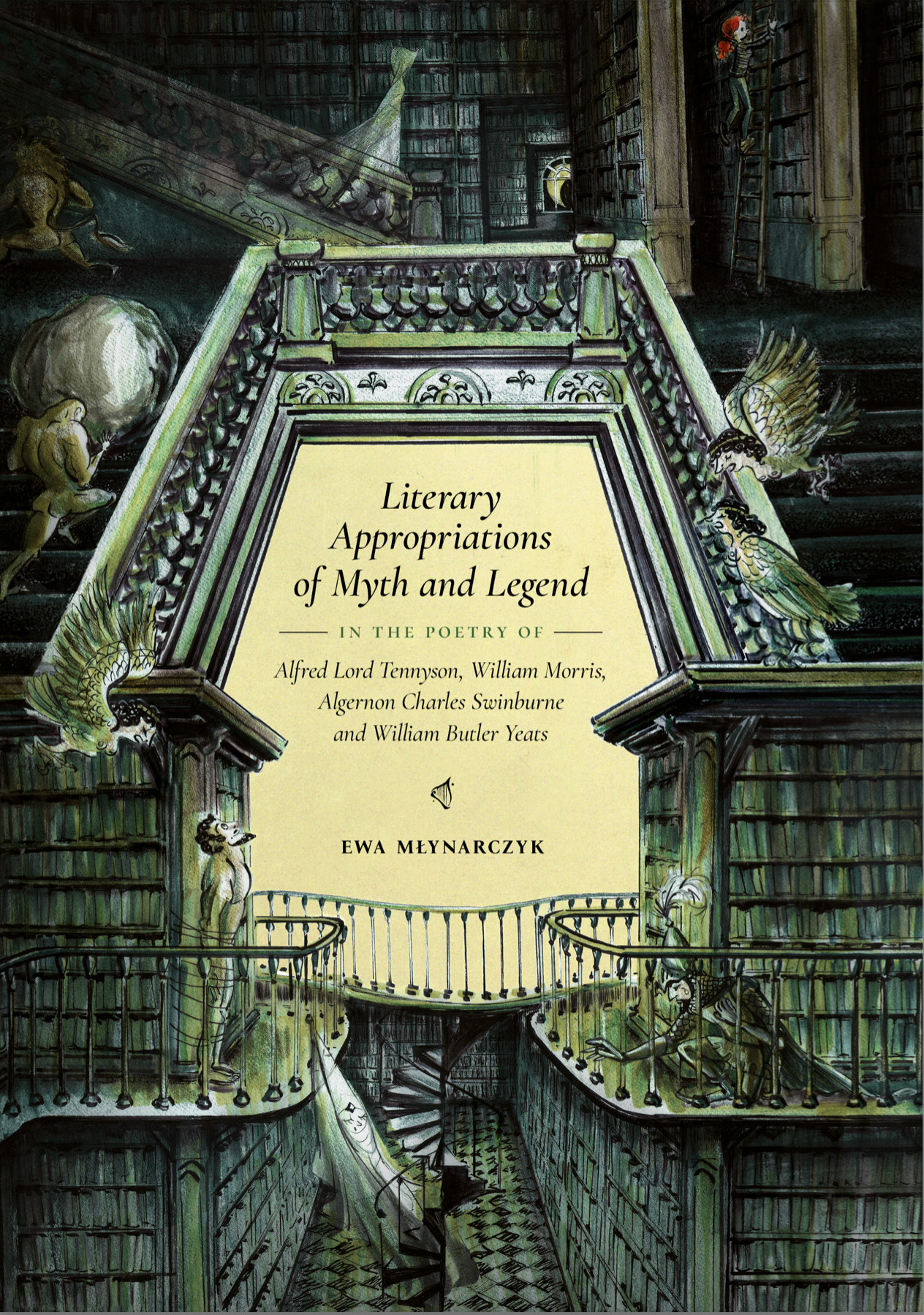The following paragraphs come from the Preface to Literary Appropriations of Myth and Legend in the poetry of Alfred Lord Tennyson, William Morris, Algernon Charles Swinburne and William Butler Yeats, by Ewa Młynarczyk (1982-2022). See bibliography for details. This was written as a doctoral thesis for the Institute of English Studies, University of Warsaw, but, very sadly, Ewa died before she was able to defend it. Her supervisor, Professor Grażyna Bystydzieńska, having given it a final edit, the institute has now made it available as a book. The proceeds of the paperback edition will – in accordance with the wish of Ewa's parents – support the Avalon Foundation in Warsaw, which helps people with disabilities. A free electronic version can also be downloaded (click on the title in the bibliography). — Links and illustration added by JB

or centuries, myth has proved to be a powerful vehicle for generating new, epoch-dependent meanings. After its temporary eclipse in the eighteenth century, myth’s universal usability once again reasserted itself in the poetry of Romantic, Victorian and later nineteenth-century poets. As the functions of myth in English Romantic poetry have already been discussed in many seminal works, in this book the Romantic heritage will serve as a point of reference for the study of the use of myth in the selected poems by Alfred Lord Tennyson, William Morris, Algernon Charles Swinburne and William Butler Yeats.

It seems that the use of mythological motifs in this epoch has come to be seen in a negative light, as mere repetitions of heavily overused clichés. Such a viewpoint has been expressed by Bernard Richards in the Introduction to his English Poetry of the Victorian Period 1830-1890, as he explains why he has decided to exclude this thematic area from his study. He grudgingly admits that “[a] Victorian history would almost certainly have given more prominence to legend and mythology,” only to concur with Gerard Manley Hopkins’s criticism from a letter to Robert Bridges: “Believe me, the Greek gods are a totally unworkable material; the merest frigidity, which must chill and kill every living work of art they are brought into.” Richards then stresses his point even further by quoting Philip Larkin as saying that classical and biblical mythology “not only fills poems full of dead spots but dodges the writer’s duty to be original” (9).
Yet, the aim of the present study is to show that the works of Tennyson, Swinburne, Morris and Yeats prove that mythologies could still be employed in original and creative ways. Not only do these poets show keen awareness of the classical heritage but they also venture into other cultural areas, exploring Celtic and Norse themes and adapting them for their particular needs. Another important feature that they all share is the influence of the Romantic tradition on their works, so that these poets themselves may be perceived as the last Romantics. Their individual attitudes to myth will be discussed in greater detail in the Introduction. At this point, it should only be mentioned that several of the poems to be discussed in the present study have not yet received their due share of criticism, some because of their sheer bulk (as in the case of Morris’s four-volume The Earthly Paradise), others due to the fact that they have been perceived either as derivative and no longer original (such as Swinburne’s later poetry) or as early attempts at poetic style not yet developed enough to be worth serious critical attention (such as Yeats’s “The Wanderings of Oisin”). Moreover, it may seem a serious oversight to discuss the use of mythology in Yeats without touching upon the Cuchulain theme in his works. Yet, this motif appears to be much more prominent in his plays, the discussion of which is beyond the scope of the present work. Instead, I have focused here on his first major literary endeavour, “The Wanderings of Oisin” (1889), and on three other minor, and perhaps lesser-known, poems from his early collections, The Rose (1893) and The Wind Among the Reeds (1899).... [Młynarczyk 9-10]
The Introduction to the present study will aim at presenting the background information about the development of myth theories in the nineteenth century, and, more specifically, the views on myth of Tennyson, Morris, Swinburne and Yeats. The following three chapters will then focus on the comparative analysis of a given mythical motif, namely, the quest, the otherworlds, and the outcast, as presented in the works of all the four poets, and drawn from Greek, Celtic and Norse myths and legends. Yet, it is the variations and nuances the four poets introduce into their source material and the consequent shifts in meaning that will be of major interest. While the last analytical chapter will be mostly concerned with the theme of poetic alienation and divine inspiration, the final group of the stories to be discussed there are of special importance as they encompass all the three main motifs. [Młynarczyk 15-16]
Links to Related Material
- George Eliot's Casaubon, the Scholar-Mythologist (from the Introduction)
- William Morris and the Old Norse Legends (also from the Introduction)
Bibliography
Młynarczyk, Ewa. hereLiterary Appropriations of Myth and Legend in the poetry of Alfred Lord Tennyson, William Morris, Algernon Charles Swinburne and William Butler Yeats. Warsaw: Institute of English Studies, University of Warsaw, 2024.
Richards, Bernard. English Poetry of the Victorian Period 1830-1890. London: Longmans, 1993.
Created 14 January 2024